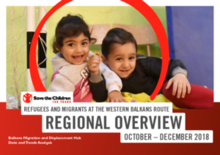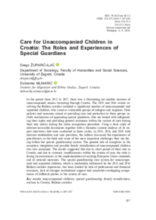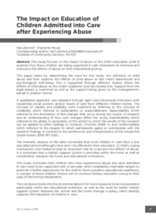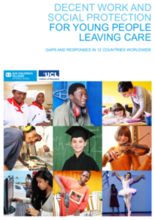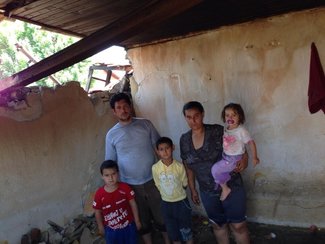

Displaying 281 - 290 of 539
The present study concerning domestic adoption explored the adjustment of 37 adolescents and 22 emerging adults (with age ranging between 11 and 18 and 18 and 24 years, respectively), adopted through an Italian form of open adoption, and analyzed the quality of adoptive family relationships and adoptees' attachment as possible moderating variables in the relation between multiple pre-adoptive risk factors and adoptees' outcomes.
As part of the "Children Come First: Intervention at the border" project, Save the Children Italy elaborates and disseminates, on a quarterly basis, a dossier containing quantitative and qualitative information (profiles) relating to migrant minors entering Italy. This dossier contains information relating to the last quarter of 2017.
Data and Trend Analysis (DATA) Refugees and Migrants at the Western Balkans Route Regional Overview, covering period October - December 2018, describes key trends in migrations in the region, detailing information about the number of people on the move, demography (age, sex, country of origin, etc), behavioral patterns, and routes in use - with a focus on children, particularly unaccompanied children. Data in this report includes key trends in Bulgaria, North Macedonia, Serbia, Albania, Montenegro, Bosnia and Herzegovina, and Croatia.
Special guardians have been tasked with safeguarding the rights of unaccompanied minors in Croatia and providing general assistance within the system of care during their stay and/or during the status recognition procedure. The authors of this study discussed the experiences of practitioners in the field and some of the most important challenges they are facing within the special guardianship system.
The goal of the research is to gain insight into the challenges of foster care for children with behavioral problems from the perspective of experts and their suggestions for improving foster care, with the purpose of identifying guidelines for the development of specialized foster care and protecting the welfare of children with behavioral problems.
This study focuses on the impact of abuse on the child’s education while it explores how these children are being supported in care institutions to minimize and overcome the effects of abuse on their educational journey.
The purpose of the present Situation Analysis of Children with Disabilities in Albania is to generate comprehensive knowledge about children with disabilities to inform concrete actions by the Albanian government and UNICEF Albania to address the most critical rights violations of children with disabilities.
The aim of this report from SOS Children's Villages is to increase the knowledge and understanding of the needs and rights of young people ageing out of alternative care around the world, in order to inform strategies, policies and services to improve their life chances and outcomes through appropriate preparation for leaving care as well as after-care support.
This report summarizes the main findings of the ‘Study on Violence against Women and Violence against Children,’ conducted in Albania, Belarus, Kazakhstan, the Kyrgyz Republic, Moldova, Turkey and Ukraine from 2016 to 2017, to identify major areas of overlap between intimate partner violence (IPV) and violence against children (VAC).
The chapter presents a critical analysis of the reception system for non-asylum seeking unaccompanied migrant children in Calabria, a region of South Italy.


